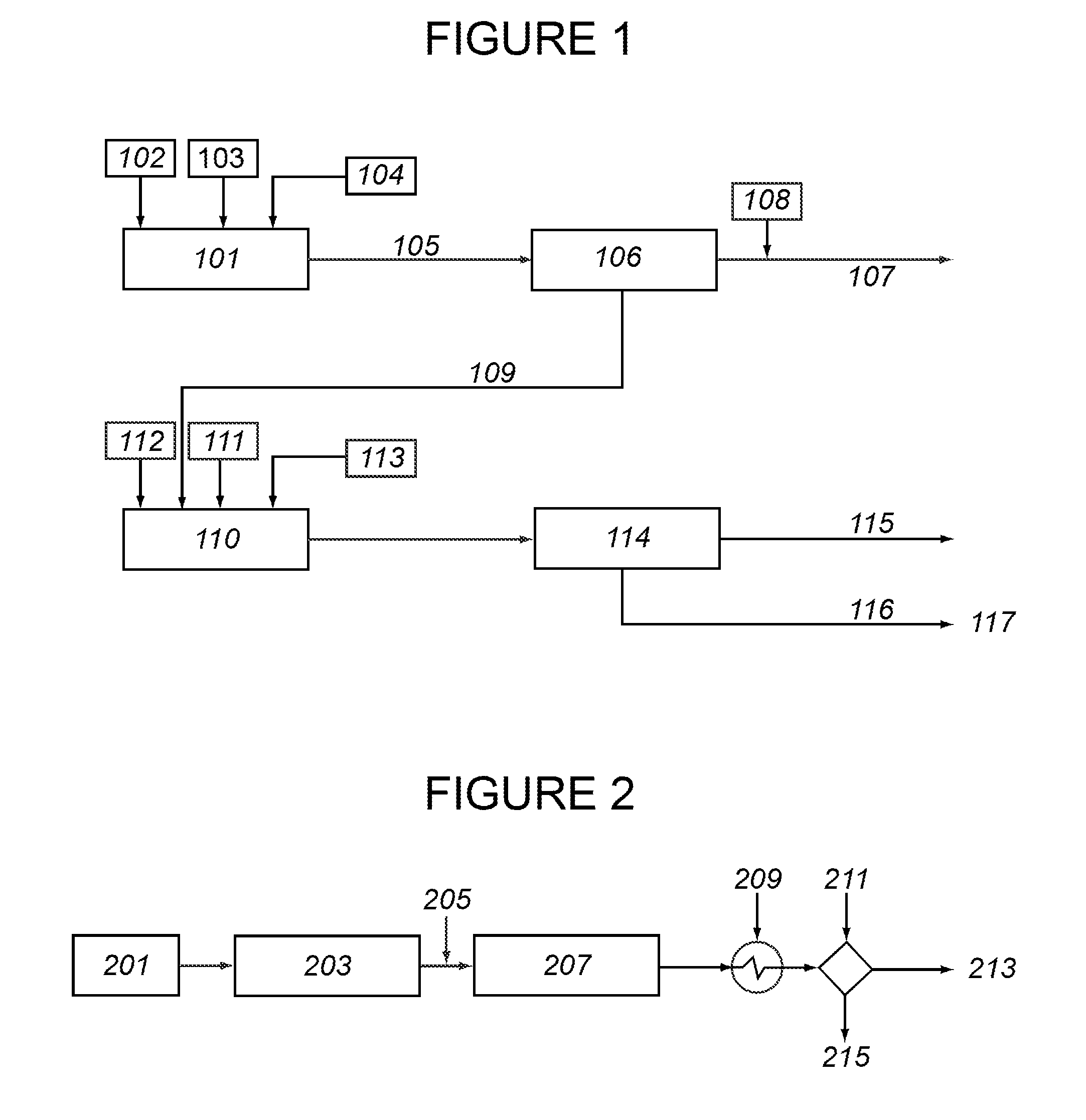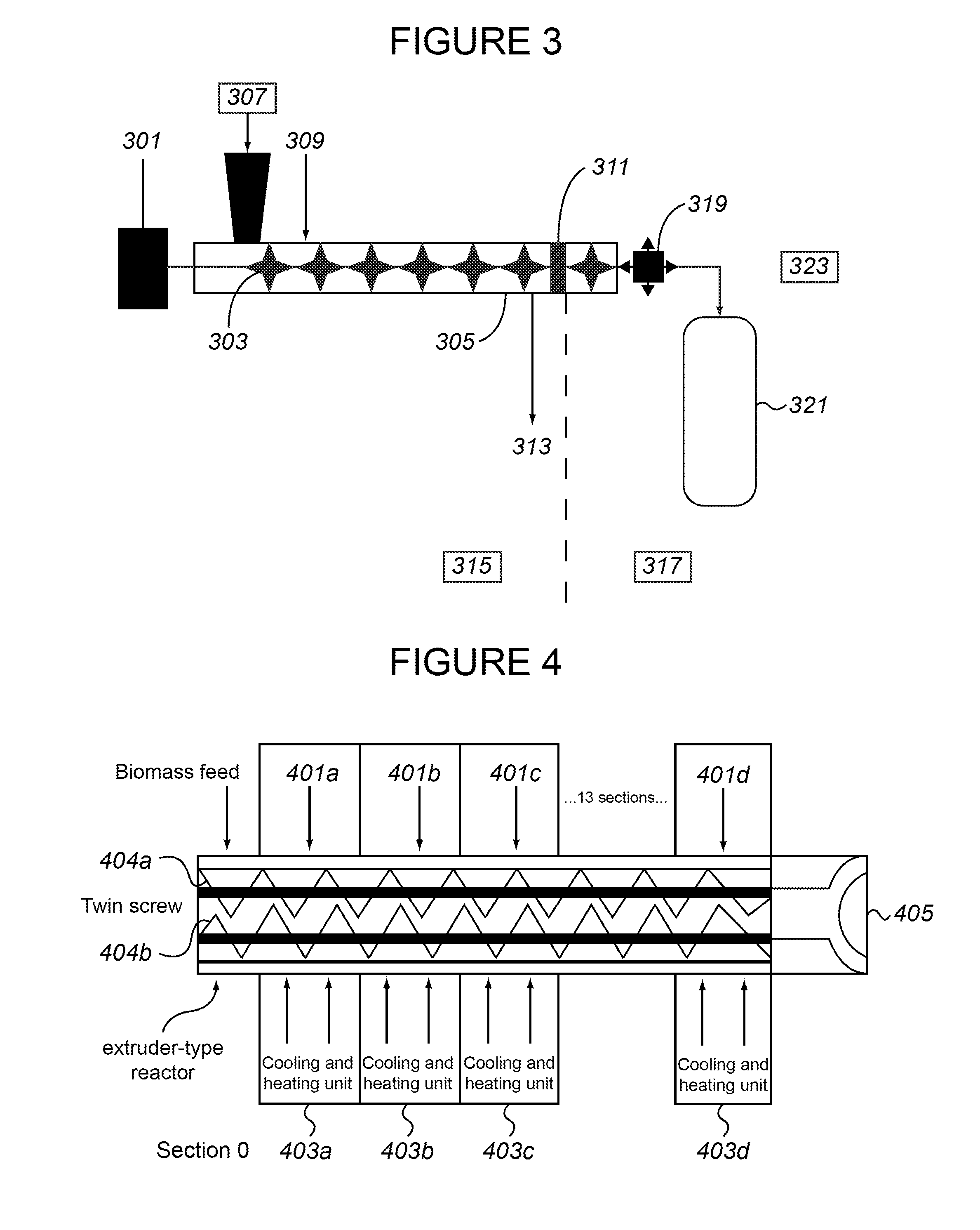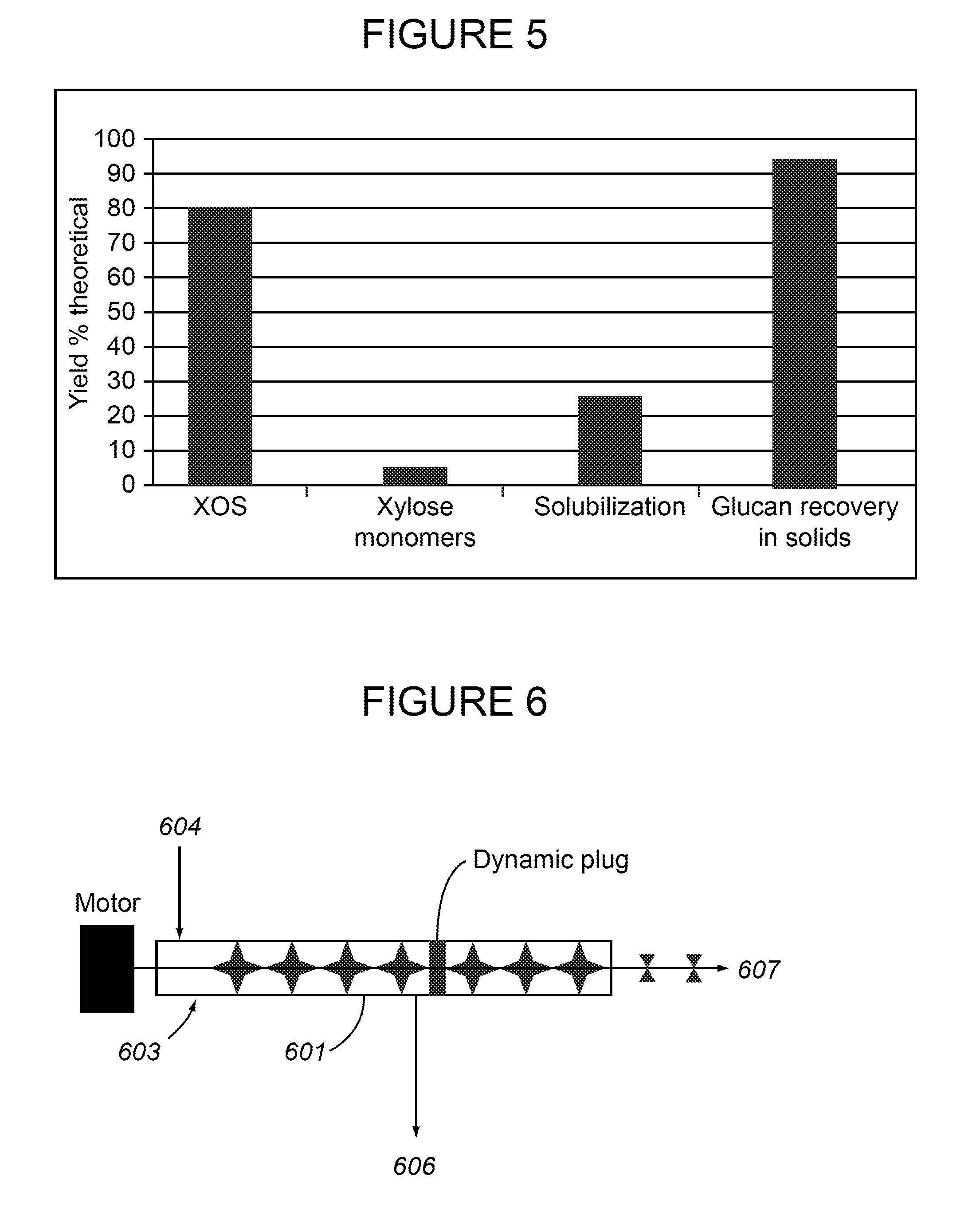Production of fermentable sugars and lignin from biomass using supercritical fluids
a technology of supercritical fluids and fermentable sugars, which is applied in the direction of glucose production, finely divided material pretreatment, chemical production, etc., can solve the problems of high capital expenditure and time-consuming current technology
- Summary
- Abstract
- Description
- Claims
- Application Information
AI Technical Summary
Benefits of technology
Problems solved by technology
Method used
Image
Examples
example 1
Continuous Pretreatment of Biomass
[0199]A continuous pilot-scale system with a 100 kg / d (dry basis) capacity was used. A schematic of the pretreatment setup is shown in FIG. 2. Biomass slurry in water 201 is fed into a furnace 203 and heated. Optionally, carbon dioxide 205 is introduced as a supercritical fluid with supercritical CO2 being a catalyst into the pretreatment reactor 207. After pretreatment, the fractionated biomass is cooled by the introduction of cooling fluid 209, such as water (with or without acid, preferably an inorganic acid). The liquid fraction 215 containing the xylose is separated using a solid / liquid separator 211 from the solid fraction 213 containing cellulose and lignin. Experiments were conducted in the temperature range of 220-250° C., pressure of 100 bar and residence times of 1-1.6 minutes. FIG. 14 shows yields on incoming feed basis; the feed containing ˜35% glucan, ˜18% xylan and ˜30% lignin (mixed hardwoods).
example 2
Continuous Cellulose Hydrolysis Using Supercritical and Near-Critical Water
[0200]A continuous pilot-scale system with a 100 kg / d (dry basis) capacity was used. Schematic of the cellulose hydrolysis setup is shown in FIG. 7. The pretreated biomass slurry 701 is first preheated in a furnace 702 then directly subjected to hydrolysis in a hydrolysis reactor 707 using supercritical and near-critical fluids. Supercritical water (SCW) 705 (prepared by heating a water stream 703 in a furnace 704 under pressure) and supercritical CO2 706 (and optionally acid, not shown) act upon glucan to selectively hydrolyze it while majority of the lignin stays insoluble. The hydrolyzed slurry is quenched with, for example, water quench 708 (with or without dilute acid, preferably an inorganic acid, such as sulfuric acid) to slow the down the hydrolysis reaction and prevent the formation of degradation products. The use of acid in the quench also hydrolyzes the cello-oligosaccharides to glucose monomers. ...
example 3
Continuous Conversion of Xylo-Oligosaccharides (×0S)-to-Xylose Monomers Using Acid and Hot Compressed Water
[0201]A continuous system with a 10 kg / d (dry basis) capacity was used. Schematic of the setup was similar to that shown in FIG. 2. Xylose liquor produced from a pretreatment operation similar to Example 1 was used as starting material. Experiments were conducted in the temperature range of 180-240° C., pressure of 100 bar and residence time of 1-3 s. H2SO4 at 0.1%-0.2% (pH=1.7-2.0) was introduced into the liquor as a catalyst. Results show that ˜90% monomeric xylose yield can be achieved in 1 s using 0.2% acid (FIG. 15).
PUM
| Property | Measurement | Unit |
|---|---|---|
| temperature | aaaaa | aaaaa |
| pressure | aaaaa | aaaaa |
| residence time | aaaaa | aaaaa |
Abstract
Description
Claims
Application Information
 Login to View More
Login to View More - R&D
- Intellectual Property
- Life Sciences
- Materials
- Tech Scout
- Unparalleled Data Quality
- Higher Quality Content
- 60% Fewer Hallucinations
Browse by: Latest US Patents, China's latest patents, Technical Efficacy Thesaurus, Application Domain, Technology Topic, Popular Technical Reports.
© 2025 PatSnap. All rights reserved.Legal|Privacy policy|Modern Slavery Act Transparency Statement|Sitemap|About US| Contact US: help@patsnap.com



